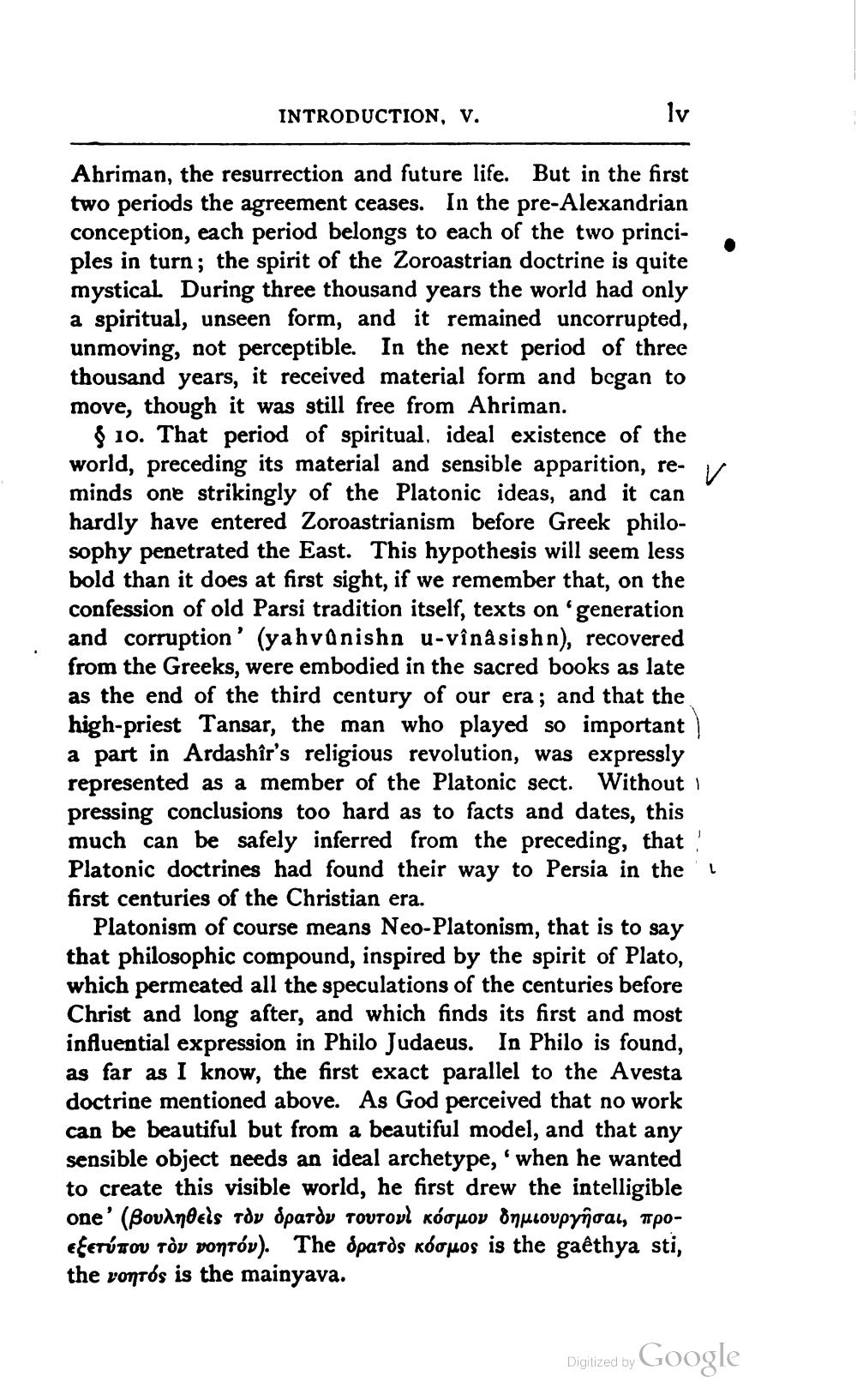________________
INTRODUCTION, V.
Ahriman, the resurrection and future life. But in the first two periods the agreement ceases. In the pre-Alexandrian conception, each period belongs to each of the two principles in turn; the spirit of the Zoroastrian doctrine is quite mystical. During three thousand years the world had only a spiritual, unseen form, and it remained uncorrupted, unmoving, not perceptible. In the next period of three thousand years, it received material form and began to move, though it was still free from Ahriman.
10. That period of spiritual, ideal existence of the world, preceding its material and sensible apparition, reminds one strikingly of the Platonic ideas, and it can hardly have entered Zoroastrianism before Greek philosophy penetrated the East. This hypothesis will seem less bold than it does at first sight, if we remember that, on the confession of old Parsi tradition itself, texts on 'generation and corruption' (ya hvůnishn u-vînàsishn), recovered from the Greeks, were embodied in the sacred books as late as the end of the third century of our era ; and that the high-priest Tansar, the man who played so important) a part in Ardashir's religious revolution, was expressly represented as a member of the Platonic sect. Without i pressing conclusions too hard as to facts and dates, this much can be safely inferred from the preceding, that Platonic doctrines had found their way to Persia in the 'i first centuries of the Christian era.
Platonism of course means Neo-Platonism, that is to say that philosophic compound, inspired by the spirit of Plato, which permeated all the speculations of the centuries before Christ and long after, and which finds its first and most influential expression in Philo Judaeus. In Philo is found, as far as I know, the first exact parallel to the Avesta doctrine mentioned above. As God perceived that no work can be beautiful but from a beautiful model, and that any sensible object needs an ideal archetype,' when he wanted to create this visible world, he first drew the intelligible one' (Bouandeis rdv &pardu toutoul kóruov onucoupyñoal, ipoCEETÚTOV TÒV pontóv). The Spards Kóguos is the gaethya sti, the vontós is the mainyava.
Digitized by Google




